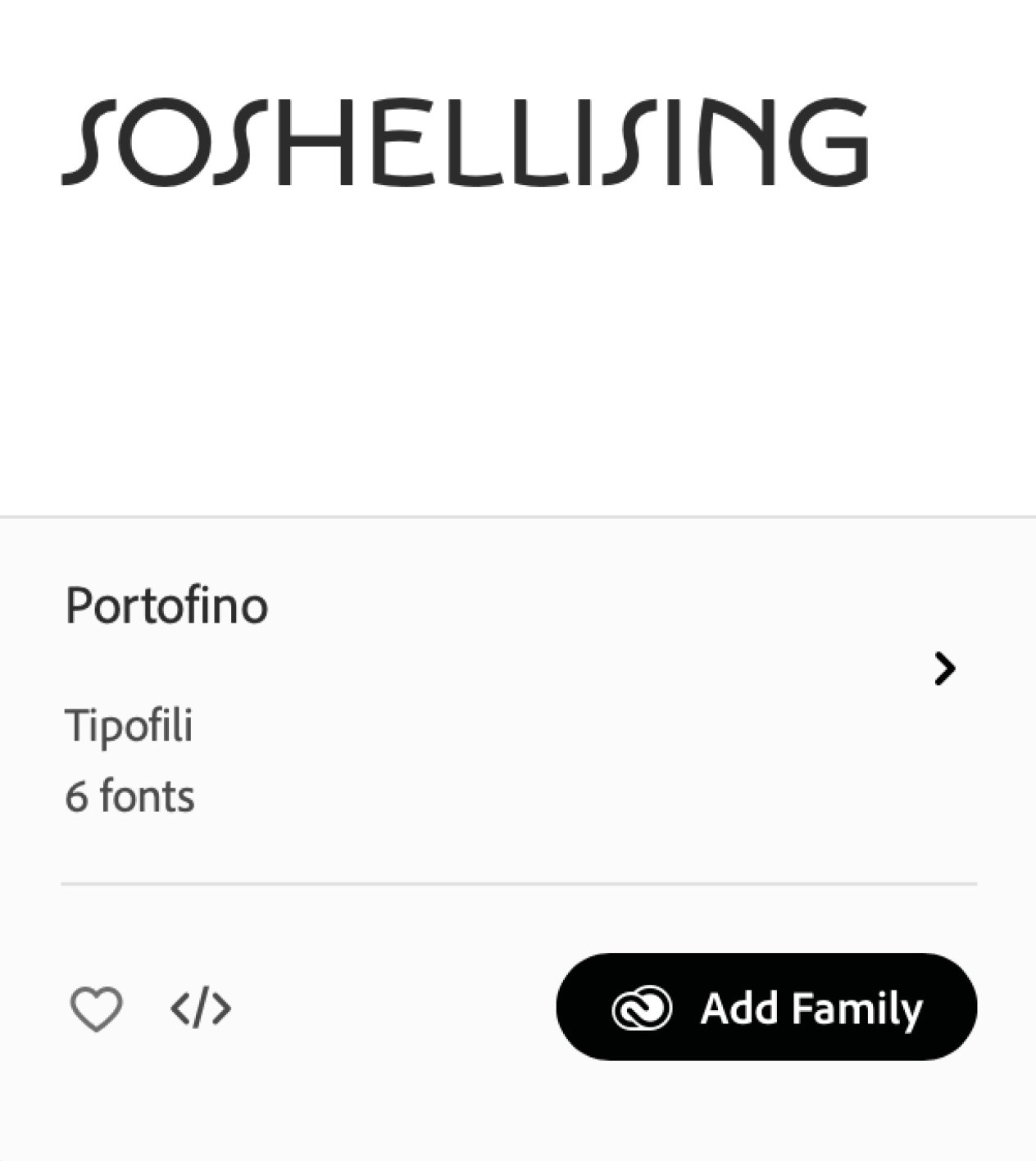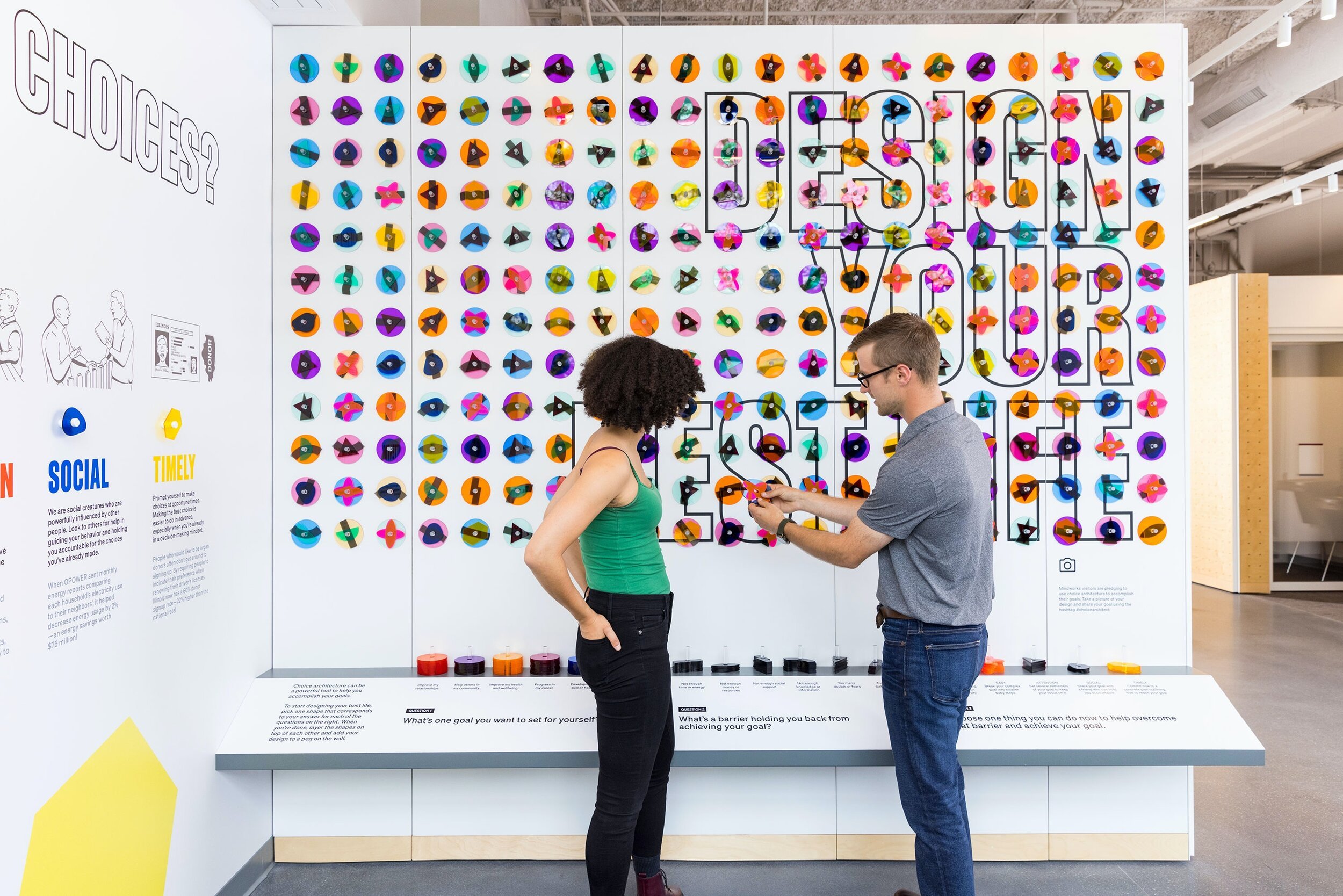Development.
Task 3:
This week's challenge is to explore a range of solo practitioners who have created self-directed works in a similar field to our project. We are asked to evaluate the strengths and weaknesses of these professional examples to gain a deeper critical reflection and demonstration of our thinking and working processes. In week 3, during my development process, I intentionally explored all my ideas and willingly made mistakes to ensure that my final outcome met my desired level of perfection. As a result, this post will showcase various ideas that I have adjusted, some unsuccessful and some successful, and how I've gained insights from each attempt. Additionally, I will discuss two distinct approaches to my project, continuing to divide my final project brief into two separate parts.
Learning Objectives:
LO1: Research — Select and deploy appropriate research methodologies to inform the needs within a project.
LO4: Distil — Position a creative strategic insight that has been distilled and refined through an informed investigation.
LO5: Imagine — Deliver appropriate and innovative ideas that embrace risk, have contemporary relevance and question the boundaries of the discipline.
LO6: Make — Select and utilise relevant tools, skills and technologies in the delivery, iteration and sustainable production of an outcome.
LO7: Collaborate — Demonstrate inclusive and empathetic strategies to plan and execute a project across distributed collaborative situations.
LO8: Design — Realise a final solution that evidences its strategic journey and clear relationship between form and function.
LO9: Communicate — Communicate effectively in a range of contexts and situations to specialist and non-specialist audiences.
change in plan again
Reflection on my tutorial with Frauke:
Following my tutorial with Frauke, I made a significant change to my project plan. It's fascinating to note the diverse approaches each tutor offers in assisting with my project. Frauke introduced a thought-provoking concept to me: sustainability. Given that my entire project revolves around shells, I realized that for it to represent my vision truly, it should have a minimal environmental impact. Initially, my idea involved packaging my product with plastic, but her inspiring words led to a profound evolution in my approach.
Moreover, Frauke encouraged me to reflect critically on the engagement of my project in two distinct ways. The first approach involves discreetly distributing the shell with its message, devoid of any reference or branding, to observe how it resonates with people. The second approach suggests presenting the shell and message authoritatively, establishing a social platform for interaction to create a more conventional and structured engagement akin to a safety network. Frauke's remark that "Giving a stranger something very mysterious and mystical is very artistic" resonated deeply with me and clarified the purpose of my project. I realised that my goal was to evoke unique emotions and experiences in people, and if I were to turn this into a branded product, it would dilute the essence and purpose of the project. Recognizing the potential harm an approach involving packaging, logos, and brand identity might cause, I decided to embrace a mysterious and nameless approach, similar to fortune-teller cookies, which fulfil their purpose without a brand, solely offering a message.
Additionally, Frauke encouraged me to explore ancient packaging techniques known for their sustainability. She cited an example where people would protect grapes by covering them with clay instead of using plastic and harmful materials. This perspective shift prompted me to reevaluate my project from a new angle.
Develop Process:
“I wouldn’t be where I am now if I didn’t fail a lot. The good, the bad, it’s all part of the success equation.”
—Mark Cuban
Pinterest inspiration:
"Creativity is allowing yourself to make mistakes. Art is knowing which ones to keep."
- Scott Adams
Pinterest played a crucial role in helping me overcome my artist's block. Following my tutorial, when I was struggling to generate fresh ideas, I turned to Pinterest to explore innovative concepts. I'm grateful I did because it introduced me to numerous sustainable approaches that allowed me to convey my message effectively. Learning from both Pinterest and the work of others not only provided inspiration but also saved me valuable time in my creative process. Thus, for my final material, I chose paper as it is a great way to help the environment since it's renewable and can be recycled, making it a sustainable way to impact the planet positively.
Process Videos: “Applying Resin + Gold paint + heart” giving it an extra finish with love
Critical Reflection:
This critical reflection will discuss the effect of giving my shell with a hidden message, whether without context or with context and reference, and how it carries distinct implications and outcomes.
Firstly, when I offer the shell with its hidden message empty of any context or reference, I create a scenario filled with intrigue and mystery, just like what Frauke implied. The recipient is left to their own devices to decode the meaning or significance of the gift. This approach can cause different reactions and interpretations ranging from confusion and frustration to curiosity and wonder. People may project their own experiences and emotions onto the message, leading to a highly individualized response. This method can be seen as a form of artistic expression similar to abstract art, allowing people to form their narratives and meanings. However, there are potential drawbacks to this approach. Without any context, the message may be misinterpreted, leading to misunderstandings or missed connections. Some people may feel alienated or perplexed, and the intended message might not come across as I hoped. Thus, this method relies heavily on the receiver's ability and willingness to engage in the interpretation process, which can be unpredictable and may not always align with my intentions.
Conversely, providing the shell with context and reference offers a more guided and deliberate communication. By providing information or a backstory related to the shell or message, I ensure that the recipient understands my intention and the significance behind the gift. This approach reduces the likelihood of misunderstandings and allows for a more immediate connection based on shared knowledge. However, including context and reference also limits the openness to interpretation. The recipient's response may be more predictable, as they are more likely to align their understanding with the provided information. While this can be a more effective method of conveying a specific message or emotion, it may lack the sense of mystery and artistic abstraction to make the first approach so intriguing.
In conclusion, the critical reflection on these two approaches underscores the importance of intention and the desired outcome in the act of giving a shell with a hidden message. Whether I provide context or leave it open to interpretation depends on my objectives and the connection I seek with the recipient. Each approach has its merits and limitations, and the key is to be aware of the potential consequences of my choice in order to create a meaningful and purposeful interaction.
Part 1:
Giving the Shell with No Context or Reference:
Dymo LetraTag:
I stumbled upon this forgotten item while going through my box of packed books and art supplies, and its significance didn't truly register with me until now. I haven’t used this tool in quite some time, but I now appreciate how convenient it was for simple writing, cutting, and pasting. This label maker served as an ideal substitute for plastic. I've come to appreciate its simplicity in adhering to the shell, thanks to the double-sided tape and its seamless fit inside the shell. I firmly believe that this label maker represents the most effective method for conveying my concealed message.
Failed Approach:
Why it failed:
Harmful to the environment - unsustainable
Complicated to understand
Too many things items
Plastic - takes years to decompose
Causes pollution and kills ocean life
Successful Approach:
Why it succeeded:
Sustainable and recyclable
Easy to find the message
Rolls back and forth and doesn’t fall off
Gives a clean and clear message
Resonates with my project brief
Brainstorming quotes and personal sayings:
I recently downloaded the "Motivation" app, and it has proven to be an invaluable resource for my project. This app enables me to search for quotes that resonate with my project's brief. What's particularly beneficial is the daily motivational notification feature. These daily notifications serve as constant reminders of the project's fundamental objectives, helping me to stay focused, tackle challenges, and uphold a positive outlook. The app has become a dependable source of inspiration, continually motivating me to take action and make daily progress toward my project's goals.
Message Pasting process:
Final Look:
Part 2:
Giving the Shell with Context or Reference:
Title Thinking Process:
Tagline Thinking Process:
"Spreading Joy for My Own Well-Being."
"Happiness Shared, Mental Health Boosted."
"Affecting Lives, Uplifting My Mind."
"The Power of Positivity: My Secret to Happiness."
"Kindness to Others, Kindness to Myself."
"The Joy in Giving: A Path to Inner Peace."
"The Ripple Effect of Happiness on My Mind."
"Lifting Spirits, Lightening My Soul."
"The Happiness Connection: Others and Myself."
"Helping Hearts, Healing Minds."
"Spreading Joy, One Day at a Time."
"Brightening Lives, One Day at a Time."
"Making Days Brighter, Making My Day."
"Bringing Smiles, Making My Day Shine."
"Happiness Shared is Happiness Doubled."
"Creating Moments of Joy Every Day."
"Your Happiness, My Happiness."
"Cherishing Every Moment, Making My Day."
"Sunshine in Every Act."
"Making Someone's Day, Making Mine."
Design & Layout:
Colour theme:
Typeface Process:
Chosen Typeface:
Photography process:
Process video:
Failed card designs:
Front Design:
Back Design:
Case studies:
Verònica Fuerte:
Verònica Fuerte talks about her creative style, emphasizing her passion for timeless and minimal design. She acknowledges that this kind of design can be tricky. She spends time simplifying ideas for different design projects and values finding the right starting point. Her insights have taught me about patience and personal commitment in design, and how a designer's unique perspective can make a big difference. Her approach has inspired me to focus on simplicity and understand the creative process better in my own projects.
Vince Frost:
“On self-initiated projects I am the client, I’m doing it because I want to do it and I enjoy doing it. I reflect on it a lot. I live with the designs, I print them out, I put them on the wall. I look at it time and time again and adjust and tweak until that I feel it’s right.”
-Vince Frost
I really connect with Vince Frost's thoughts on self-initiated projects. When someone tackles these projects, they become their own client, driven by personal passion to create something meaningful. Thus, I enjoy this process and share his perspective. His method of self-initiated work, which involves reflecting on and living with the designs, profoundly resonated with me. Like Vince, I also continually revisit and improve my self-initiated projects by printing and displaying them. I fully immerse myself in the creative process and make necessary adjustments until it feels right. Some people call me a perfectionist because of my constant reflection and enhancement, aligning my approach to self-initiated projects and emphasizing my commitment to making them the best they can be.
Contextual Research:
Erik Kessels on the power of failure:
"Creativity is not about avoiding failure but about learning from it and using it to your advantage."
- Erik Kessels
I incorporated Erik Kessels' methods and insights from his video into my own creative project. I took his advice to heart and decided to be more open to experimentation and willing to accept the possibility of failure as part of the process. Instead of fearing mistakes, I actively embraced them as opportunities for growth and creativity. As I worked on my project, I gradually allowed room for trial and error, recognizing that even if something didn't go as planned, it could lead to unexpected and innovative outcomes.
This approach allowed me to explore new creative avenues and ideas that I might not have considered if I had played it safe. What was particularly rewarding was that, as Kessels explained, some of my project's most compelling and unique aspects emerged directly from the moments I initially considered my efforts to have "failed." I witnessed firsthand how failure could lead to creative breakthroughs and unexpected successes when approached with an open mind. In summary, Erik Kessels' video not only reshaped my perspective on the role of failure in the creative process but also influenced how I approached my own projects. By embracing failure and seeing it as a source of creative potential, I was able to achieve results that I might not have otherwise imagined.
David Horvitz:
Frauke, my instructor, introduced me to David Horvitz's project "True Courtship Dance" during our tutorial. She shared with me the concept and the fascinating story behind it. This project involved placing small objects depicting seahorses' mating rituals into people's pockets and bags during an art fair instead of stealing from them. The idea originated from the intricate courtship behaviour of seahorses.
I was genuinely inspired by this unique approach to art and how it engages people unexpectedly. It made me consider the power of storytelling and symbolism in art. Frauke's introduction to this project encouraged me to think creatively and consider how to incorporate similar elements into my work.
I learned from David Horvitz's project that art can transcend traditional boundaries and that the unexpected, such as a small object in a pocket, can profoundly impact an individual's experience and perception of art. This inspiration influenced my own project, leading me to explore unconventional ways of engaging with my audience and telling a compelling story through my shells.
Pentagram’s new interactive design project dedicated to the science of decision-making:
Pentagram has launched a captivating interactive design project focused on the science of decision-making. This project delves into the intricate processes and factors that influence how people make choices. Through this project, I gained valuable insights into the psychology of decision-making, understanding how various elements can impact individuals' choices. I discovered the importance of context, presentation, and the emotional aspect of decision-making, all essential in guiding people towards a particular choice.
This project directly relates to my own project of distributing shells with hidden messages to strangers. It made me realize that the context and presentation of these shells can significantly influence how people interpret and respond to them. By considering the principles of decision-making, I can enhance the effectiveness of my project in terms of the messages and emotions it conveys, fostering a more meaningful and engaging interaction with the recipients.
Fortune Cookies:
Fortune cookies, often almond-flavoured and served in Chinese restaurants after meals, hold small paper fortunes with brief messages, adding an element of surprise and amusement to dining. Its concept served as an inspiration for my shell project. Just as fortune cookies offer a hidden message or insight to diners, I wanted to create a similar sense of intrigue and surprise by placing hidden messages within shells. By distributing these shells to strangers, I aimed to provide them with an unexpected and engaging experience, similar to the feeling one gets when cracking open a fortune cookie. The shells became a vessel for sharing meaningful and mysterious messages with others, promoting a sense of curiosity and connection.
A video that resonates with my project’s brief: its the simple things that matter the most
This video taught me how a simple smile can have an extraordinary power to brighten someone's day. It transcends language and spreads warmth, conveying kindness and understanding. It's a universal gesture that can turn a stranger into a friend and make the world better. I aim for my project to have this impact on people’s lives where I create an unforgettable memory. Thus, never underestimate the significance of sharing a genuine smile with others.
Self-Reflection:
This week's workload was overwhelming. I constantly felt like it was never-ending, and every time I thought I had achieved something, I realized it wasn't done correctly or as I had envisioned. However, I gained valuable insights during the development process and finally grasped my project's essence. I was able to make well-thought-out decisions and complete my designs. While it required much hard work and effort, it was worth it. I'm looking forward to next week when I'll begin sharing my project with the world and receiving feedback on both concepts, shells with context and shells without. I'm eager to see what resonates most with people. Even though I enjoyed creating the context cards for my shells, I still hope people would appreciate the one without context, as it represents my sincere intention of how making someone's day makes mine. Creating a piece of art or design with no reference or context linking to it really lifts the weight off my shoulders as a designer, as I won't need to perfect every element of design. I don't need to think of the brand identity, target audience, or final resolution as much. It is more free and artistic. In any case, I've learned a great deal this week and am excited to wrap up my work next week.
































































































